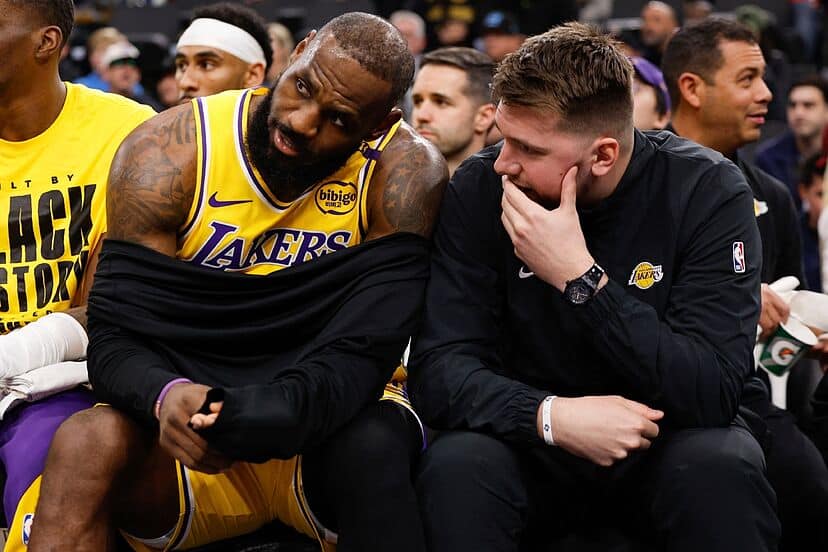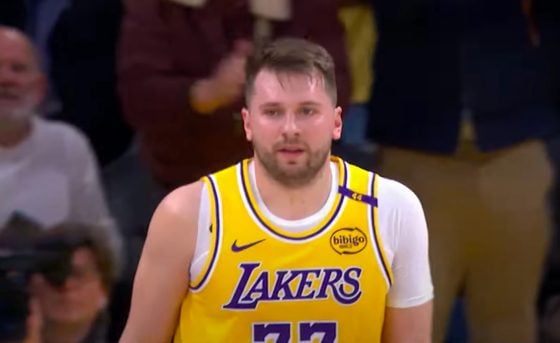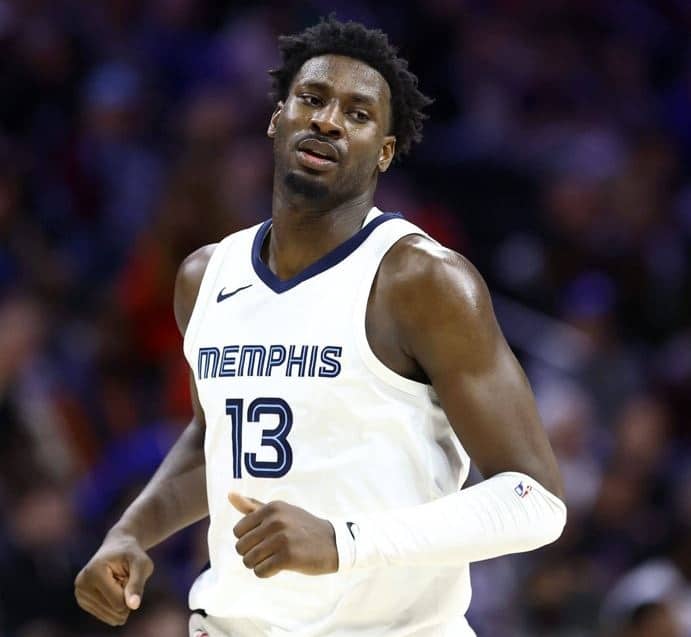As the NBA season nears, it’s important to remember that both things can be true:
1) The Celtics are the best team in the league and have an excellent chance to repeat.
2) There are 29 other teams (OK, maybe like 10) looking to dethrone them. Raising Banner 19 is doable, but it will likely be even harder than last year.
The Celtics have gotten where they are in large part because of player development. Jayson Tatum, Jaylen Brown, Sam Hauser and Payton Pritchard have come a long way since the Celtics drafted them.
Derrick White, Al Horford and Kristaps Porzingis have blossomed into the best versions of themselves in green. Jrue Holiday was basically a perfect basketball player before the Celtics and is still basically a perfect basketball player, so he doesn’t count.
As they try to repeat, it’s imperative that they avoid complacency. Continued individual growth in specific areas will go a long way.
Keep in mind that every player on the roster excels in their role, and this is all nitpicking. With that said, here’s one area of improvement for each Celtics player this season:
Jayson Tatum – 3-point shooting
Let’s start by saying that Tatum did, in fact, improve his 3-point shooting. He went from 35 percent in 2022-23 to 37.6 percent last year.
Having said that, he’s fully capable of getting that percentage even higher. Tatum shot 43.4 percent from 3 his rookie year and 40.3 percent in 2019-20.
When his 3-point shot is just OK, he’s still an amazing player. When his shot is on, he’s basically unguardable and arguably the second-best player in the world after Nikola Jokic.
Jaylen Brown – free throw volume and percentage
Brown gets to the line 4.3 times per game. It’s not bad, but when you consider his driving ability, it should be even more.
Once he gets there, Brown is a career 72 percent shooter. That number got as high as 76.5 percent two years ago, then dipped to 70.3 percent last year. It didn’t burn the Celtics in their championship run, but it could at some point.
He was one of only two players in the league to average 23 points or more and shoot 71 percent or lower from the line, joining Giannis Antetokounmpo. He was one of three players to average 23 or more and get to the line 4.3 times or fewer, joining Kyrie Irving and Kawhi Leonard. Brown takes everything personally (in a good way), so take that personally as well.
He can up those numbers to six free throws per game and 75 percent from the line no problem, and potentially to eight and 80 if he keeps working at it.
Photo by Adam Glanzman/Getty Images
Kristaps Porzingis – defend without fouling
Offensively, Porzingis is basically a cheat code when healthy (sometimes even when injured). No notes.
Defensively, he can still improve his versatility and ability to defend without fouling. It can’t be easy guarding pesky guards as a 7-foot-2 rim protector, but he’s capable of growing in that area. Some of it stems from a lack of mobility due to injury, but some of it is simply positioning and technique.
Porzingis committed 2.7 fouls per game in just 29.6 minutes per game last year. That was a team-high, and he played significantly fewer minutes per game than the other starters.
:no_upscale()/cdn.vox-cdn.com/uploads/chorus_asset/file/25633681/2155733480.jpg)
Photo by Jesse D. Garrabrant/NBAE via Getty Images
Derrick White – attack the basket
Honestly, he’s pretty darn good at basketball. He lets the game come to him, takes good shots, guards taller players insanely well and makes his teammates better.
There’s nothing to really tweak here, but one thought is that White could attack the basket even more. Just 31.3 percent of his points came in the paint. He’s an excellent driver, and adding a steady stream of drives to his arsenal could take his game even further.
Jrue Holiday – take more shots
Again, really, really good at basketball and a perfect fit. This is just a fun exercise.
But, it’s safe to say it would benefit Holiday to take more shots. He attempted just 10 per game last year – by far his lowest since his rookie season. The Celtics obviously don’t need him to take 20 a night, but there’s no reason that number can’t be around 13 to 15.
Holiday tends to perk up offensively when the Celtics really need him, which is a glorious trait. No one would fault him if he perks up offensively even when they don’t. Take some shots, Jrue. Let loose a little.
Al Horford – show off the post moves
Nearly 69 percent of Horford’s shots last year came from beyond the arc. While his spacing and 3-point accuracy are crucial, it would behoove Horford to play a bit more aggressively at the rim.
When four guys are on the perimeter, and the ball is moving with precision, the paint is often wide open. Teams have no choice but to pick their poison, and Horford is often the beneficiary. In addition to burning them from the outside, he should burn them from the inside.
Payton Pritchard – hold his own against bigs
Pritchard’s assist-to-turnover ratio was a rather impressive 4.6 last year. He improved as a scorer, facilitator and defender and, of course, was there when the Celtics needed him to hit a half-court shot.
Defensively, he fights like crazy and is scrappy. He’s inherently at a disadvantage against taller players because of his height, but even so, there’s still room to grow in that area.
When teams are smart, they get Pritchard or Hauser to switch onto post players and give them space to operate. They both hold their own, but Pritchard could still take another step in that regard.
:no_upscale()/cdn.vox-cdn.com/uploads/chorus_asset/file/25633685/2151981656.jpg)
Photo by Maddie Meyer/Getty Images
Sam Hauser – add some moves off the dribble
Hauser has already come a long way in this area, but he can still improve as a driver. Tatum and Brown love playing with Hauser because when they’re doubled, he’s often left alone on the wing.
When the help comes late, Hauser knows how to let the defender whiz by. He’s gotten better at taking one pull-up or side-step dribble and letting it fly. The next step is a go-to crossover or behind-the-back move to draw defenders to him so he can find the even-more-open man.
His shooting is his best skill, so keep on shooting. But Hauser has already proven he’s more versatile than most thought, so there’s no reason he can’t add even more playmaking to his steadily growing arsenal.
Luke Kornet – take more 3’s
Priority No. 1 for Kornet is to up his 3-point percentage. Only 100 percent? Come on, man.
But seriously, there’s no reason he can’t take more 3-pointers. Joe Mazzulla loves spacing and math, and Kornet will likely get more playing time if he can consistently knock down 3’s.
This stat may blow your mind, but Kornet took 193 3’s in 2018-19. One-hundred-ninety-three! Oh, and he shot 36.3 percent. That’s a lot. He shouldn’t be anywhere close to there (if he is, the Celtics have a bigger problem), but he should absolutely attempt more than 1 next season.
Somewhere around 40 could be a nice sweet spot. Enough to let the defender know you’re a threat, but not too often that it takes shots away from other guys. Plus, nothing will fire up the bench like a well-timed Kornet 3.
Xavier Tillman – become a force on the glass
Tillman fit in seamlessly last year, excelling as a defender and contributing offensively when the Celtics need him.
One area to improve is rebounding. He averaged 2.7 per game last year (yes, in just 13.7 minutes, which isn’t bad). He’s “only” 6’7, but he plays like he’s 6’10 in some ways. There’s no reason he can’t rebound like he’s 6’10 as well.
:no_upscale()/cdn.vox-cdn.com/uploads/chorus_asset/file/25633687/2156976918.jpg)
Photo by Jesse D. Garrabrant/NBAE via Getty Images
Neemias Queta – do enough to crack the rotation
Queta is a super intriguing player. He’s played well when he’s gotten his chance, but he hasn’t quite earned a spot in the rotation.
This could be the year, especially with Porzingis out. Earn your place so that Mazzulla has no choice but to play you even when Porzingis returns.
Jaden Springer – be aggressive
Springer is skilled. It’s hard to find a rhythm when you play sparingly, but he needs to be aggressive when he’s out there. The Celtics could use another guard off the bench, and it’s his for the taking.
Other players
Baylor Scheierman: trust what worked in college
Lonnie Walker IV: remind everyone who you are;
Drew Peterson: defensive versatility
Jordan Walsh: shooting
JD Davison: take care of the ball
Anton Watson: do the little things well






